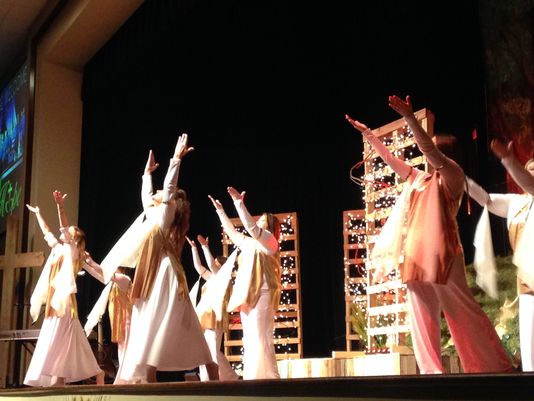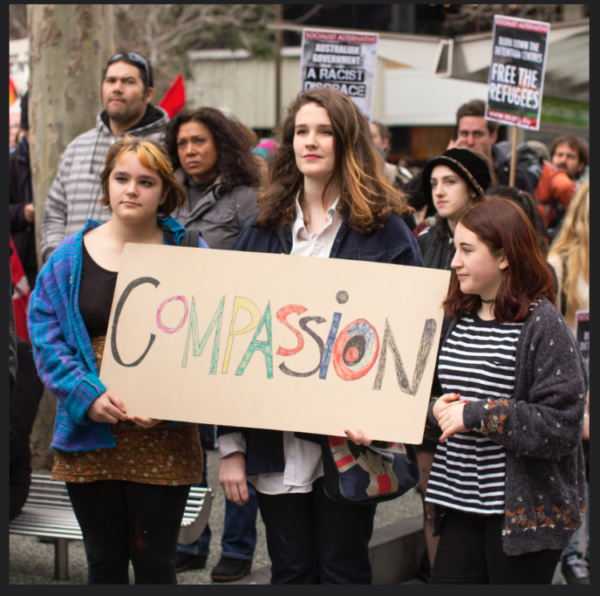It’s getting closer and closer! Trump’s occupancy of 1800 Pennsylvania Avenue is less than a month away! Many of us are worrying ourselves sick over a nation under President Trump.
A friend offers this perspective: “We are at an existential moment in our evolution as a species. “We’re in between stories: while one story is old and dying, we’re waiting for a new story to arise. This is bound to be a scary and insecure space.”

“Women of Hope,” a theatrical tableau
We can be the architects of the new story. We can reject the Trump story over one that is dominated by compassion and justice for all races, genders and sexual persuasions. Getting there won’t be easy. Feeling hopeless won’t move us forward.
Hope is tricky. It’s not as simplistic as wishing for a better outcome. Hope has to be developed within us and within our communities. Joanna Macy, the Buddhist environmentalist, has written about “active hope,” where hope is linked to intention. We identify a direction for our hope and then take steps to move in that direction.

Rebecca Solnit, author of Hope in the Dark, believes that the stories we tell ourselves about our past is linked to how we show up in the present. If our stories are predominantly ones of victimhood, than the challenge is to reimagine them where we have agency. This is an important step towards becoming an engaged, hopeful citizen.
Solnit, like Macy, insists that hope doesn’t mean denying the realities of what Trump represents and what he’s capable of, but facing these dangers and addressing them.
Solnit offers a way forward in the face of uncertainty:
“Hope locates itself in the premises that we don’t know what will happen and that in the spaciousness of uncertainty is room to act. . . . Hope is an embrace of the unknown and the unknowable, an alternative to the certainty of both optimists and pessimists. . . . It’s the belief that what we do matters even though how and when it may matter, who and what it may impact, are not things we can know beforehand. “

Rebecca Solnit, author of “Hope in the Dark”
Solnit reminds us that change is neither linear nor quick. Progress is often met with setbacks. This can be a hard message to swallow in our era of rapid technological responses where the here and now is central and where the long view gets little stride. We tend to forget or overlook past progressive gains. Even now as we moan and groan about Trump, hope is alive.
The resistance movement has mushroomed in just the seven weeks since Trump won the election. National and local protests are scheduled for the day of Trump’s inauguration. The non-violent months old protest camp at Standing Rock is historic in its scope. It continues to inspire the world.
As we go forward, liberals and progressives need to stop thinking that they are superior to Trump supporters. We can’t afford a polarized nation. A recent article by Charles Eisenstein in Yes magazine refers to this deep division, noting that “hate and blame are convenient ways of making meaning out of a bewildering situation.”

Young protesters advocating compassion, key to overcoming our differences
Eisenstein encourages us to stop feeding hate by editing our vocabularies and our online postings so they are not derisive, belittling or snarky. He suggests we ask ourselves,
“What is it like to be a Trump supporter?” He recommends investigating “not with patronizing condescension, but for real, looking underneath the caricature of misogynist and bigot to find the real person.”
As we enter the space in between stories the odds of creating a positive story are enhanced if we make compassion central. We’re all hurting, both the left and right. If we can find the common denominator in our hurt, we can build a genuine united front.
Is there any other way?
